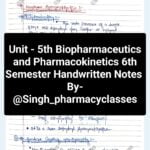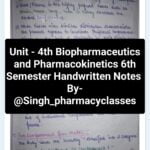DRUG ABSORPTION FROM THE GI
TRACT
TOPIC:- FACTORS AFFECTING DRUG
ABSORPTION;DISSOLUTION PROCESS
www.DuloMix.com
M PHARM II SEM
DEPT. OF PHARMACEUTICS
1
INTRODUCTION:
A drug injected intravascularly directly enters the systemic circulation and exerts its
pharmacological effects. Majority of drugs administered extravascularly, generally
orally.
If intended to act systemically, such drugs can exert their pharmacological actions
only when they come into blood circulation from their site of application. So,
absorption is an important step.
www.DuloMix.com 2
Factors affecting absorption:
A. Pharmaceutical factors:
1) Physicochemical properties of drug
a. Drug solubility and dissolution rate
b. Particle size and effective surface area
c. Polymorphism and amorphism
d. Pseudopolymorphism (hydrates or solvates)
e. Salt form of the drug
f. Lipophilicity of the drug
g. Drug stability
h. Stereochemical nature of the drug
www.DuloMix.com 3
2) Formulation factors:
a. disintegration time
b. manufacturing variables
c. nature and type of dosage form
d. pharmaceutical ingredients (excipients)
e. product age and storage conditions
www.DuloMix.com 4
B. Patient related factors:
1. age
2. gastric emptying time
3. intestinal transit time
4. gastrointestinal pH
5. diseased states
6. blood flow through the GIT
7. gastrointestinal contents
a) other drugs
b) food
c)fluids
d)other normal G.I contents
8. presystemic metabolism by
a) luminal enzymes
b) gut wall enzymes
c)bacterial enzymes
www.DuloMix.com 5
d) hepatic enzymes
a) Drug solubility and dissolution rate :
solid dosage form
disintegration
solid drug particles
dissolution (RLS for lipophilic drugs)
drug in solution at absorption site
permeation (RLS for hydrophilic drugs)
drug in the body
www.DuloMix.com 6
DISSOLUTION
Definition:
• Dissolution is a process in which a solid substance solubilizes in a given solvent
i.e. rate of mass transfer from the solid surface into the liquid phase / dissolution
medium under standard conditions of liquid/solid interface, temperature & solvent
composition.
• Dissolution is the rate determining step for hydrophobic, poorly aqueous soluble
drugs.
E.g. Griseofulvin, spironolactone
www.DuloMix.com 7
www.DuloMix.com 8
BASIC STEPS INVOLVED IN DRUG
DISSOLUTION PROCESS
Reaction of solid drug with the fluid and/or the components of the
dissolution medium.
This reaction takes place at the solid-liquid interface .
Therefore dissolution kinetics are dependent on 3 factors, namely;
✓ The flow rate of the dissolution medium towards the solid-liquid
interface
✓ The reaction rate at the interface and,
✓ The molecular diffusion of the dissolved drug molecules from the
interface toward the bulk solution.
www.DuloMix.com 9
Mechanism of Drug Dissolution
1. Diffusion layer model
2. Danckwert’s model
3. Interfacial barrier model
www.DuloMix.com 10
1. Diffusion Layer Model
• Also called ‘film theory’.
• Formation of a thin film at the interface, called as stagnant layer.
• 2 steps are involved:
i) Interaction of solvent with drug surface to form a saturated drug layer
called stagnant layer.
ii) Diffusion of drug molecules from stagnant layer into bulk of the
system.
www.DuloMix.com 11
Diagram Representing Diffusion through the Stagnant Layer
www.DuloMix.com 12
Noyes- Whitney’s equation: The rate of dissolution is given by,
𝑑𝑐
= k (c
𝑑 s – cb)
𝑡
dc/dt = dissolution rate of the drug,
k = dissolution rate constant,
Cs = concentration of drug in the stagnant layer, and
Cb = concentration of drug in the bulk of the solution at time t
www.DuloMix.com 13
Modified Noyes-Whitney’s equation
𝑑𝑐 𝐷𝐴Kw/o(Cs – Cb)
=
𝑑𝑡 𝑉ℎ
Where,
• D = diffusion coefficient (diffusivity) of the drug
• A = surface area of the dissolving solid
• Kw/o = water/oil partition coefficient of the drug.
• V = volume of dissolution medium
• h = thickness of the stagnant layer
• (Cs – Cb)= concentration gradient for diffusion of drug.
www.DuloMix.com 14
2. Danckwert’s Model
• Also called “Penetration or Surface Renewal Theory”.
www.DuloMix.com 15
➢The Danckwert’s model assumes that macroscopic packets of solvent reach
the solid-liquid interface by eddy diffusion in some random fashion.
➢At the interface, the packet is able to absorb solute according to the laws
of diffusion & is then replaced by a new packet of solvent.
➢This surface renewal process is related to the solute transport rate & hence
to the dissolution rate.
www.DuloMix.com 16
3. Interfacial Barrier Model
• The model assumes that the reaction at the solid/liquid interface is not
instantaneous due to a high activation free energy barrier which has to be
surmounted before the solid can dissolve.
• The rate of diffusion in the static layer is relatively fast in comparison with the
surmounting of the energy barrier, which therefore becomes the rate limiting in
the dissolution process.
• Drug dissolution is a function of solubility rather than diffusion.
• Intermediate concentration exist at the interface as a result of solvation.
• Dissolution rate per unit area, G is given by,
G = Ki (CS – Cb)
where Ki = effective interfacial transport constant.
www.DuloMix.com 17
Intrinsic Dissolution rate
• Rate which is independent of rate of agitation, area of solute available, etc.
Intrinsic Dissolution Rate (IDR):
o It is rate of mass transfer per area of dissolving surface.
o It is independent of boundary layer thickness and volume of solvent .
o Thus,
IDR = k’Cs
o IDR measures the intrinsic properties of the drug only as a function of the
dissolution medium, e.g. its pH, ionic strength, counter ions, etc.
www.DuloMix.com 18
Factors Affecting Dissolution rate
Surface area & undissolved solid
• Surface area α dissolution.
• Coherent masses may reduce total surface area available →overcome by
using wetting agent.
• Presence of pores.
➢E.g. dissolution of phenacetin (hydrophobic) is enhanced by adding
diluent gelatin (hydrophilic) during granulation.
➢Addition of Tween 80 to dissolution medium (0.1 N HCl) for phenacetin
increased the dissolution rate by increasing effective surface area.
www.DuloMix.com 19
Solubility of solid in dissolution medium
✓ Temp. of dissolution medium
✓ pH of the medium
✓ Solubility of the drug in dissolution medium
✓ Presence of cosolvents
www.DuloMix.com 20
Concentration of solute in solution
• Should simulate sink conditions present in GI tract.
• Larger volume of dissolution medium helps to maintain ‘C’ negligible
compared to ‘Cs’.
• Removal of dissolved solute from dissolution medium enhances rate of
dissolution.
➢ Eg. Adsorption onto another substance
➢ Partition to another immiscible liquid
➢ Removal of solute by dialysis
➢ Cont. replacement of dissolution medium
www.DuloMix.com 21
Effect of manufacturing processes
❖Addition of lubricants
E.g.: 325-mg salicylic acid dissolved rapidly in 0.1 N HCl when SLS was added to it.
➢ Dissolution rate decreases with addition of hydrophobic lubricants like Mg.
stearate.
➢ Most effective lubricants are hydrophobic →act by particle coating →hence mfg.
process is imp.
❖Addition of disintegrating agents
Eg. starch →swell & enhance dissolution.
www.DuloMix.com 22
REFERENCE:-
Brahmankar. D. M., Sunil Jaiswal. B, Biopharmaceutics and
Pharmacokinetics—A Treatise, 1st edition, Vallabh Prakashan,
New Delhi
www.DuloMix.com 23
THANK YOU
www.DuloMix.com 24










